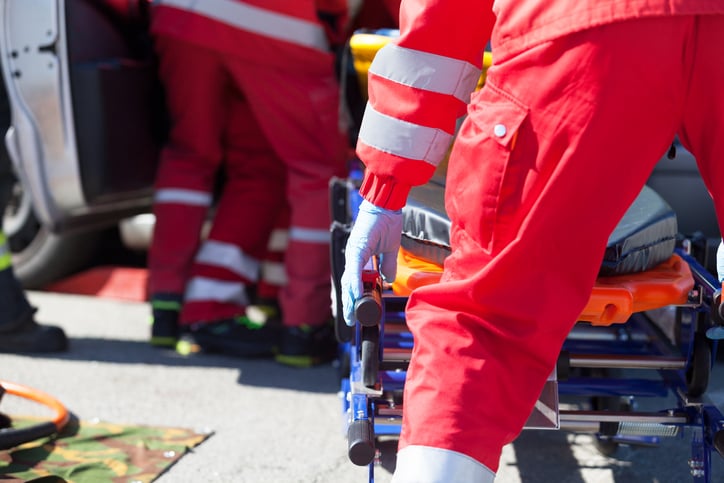
Prehospital airway suctioning can treat aspiration, choking, obstructed airways, and other common emergencies. Yet many first responders spend little time thinking about, let alone practicing, this vital skill. Because all interventions, including suctioning, carry some risks, this lack of experience may make providers reluctant to suction patients. Training EMS teams on prehospital airway suctioning can counteract this reluctance and empower teams to provide prompt, efficient, effective care in a wide variety of emergency settings.
Know the Most Common Suctioning Scenarios
There are dozens of reasons a patient might need suctioning, but three figure prominently in emergency medicine. They include:
- Trauma: A patient with airway trauma may have a partially collapsed airway, or may have broken structures such as teeth or dentures blocking their airway. Patients who have suffered trauma may be prone to secondary injuries from aspiration when blood or vomit obstructs the airway. The SALAD technique can help you quickly and safely clear the airway.
- Intoxication: Clients suspected of having overdosed may vomit, especially if they fall asleep during transport. First responders must learn the signs of intoxication and understand that intoxication is a possibility even when it is not the primary cause of an injury.
- Allergic reactions: Anaphylaxis due to stings and food allergies, as well as medication reactions, can close the airway and increase the risk of aspiration. First responders should be prepared to promptly identify the signs of allergic reactions while taking proactive steps to prevent vomiting and asphyxiation.
Train for the Real World
Intubating a passive mannequin is a comparatively easy task that does little to prepare first responders for the real world. Although you can’t perfectly re-create the scenarios EMS teams will encounter, you can mimic the challenging circumstances they can expect. Practice intubation in high-stress circumstances, such as in loud environments, in cold or hot weather, or surrounded by angry people. First responders rarely get to treat patients in perfect clinical settings, and these are not the settings they should practice in either. And above all, use a vomiting mannequin (often called a vomequin) for realistic training. If you don’t have one, they are commercially available and many online sources describe how to turn an old airway mannequin into a vomequin.
Make Training a Regular Part of the Job
Training isn’t something you can do just one time. It’s not only for beginners or people who have made recent on-the-job errors. It’s a core component of work success. The more frequently a person trains and the more varied the training settings, the better prepared they will be for the many challenges of caring for emergency patients. Schedule regular training sessions, and make them fun. When your team dreads training, they’re more likely to rush through it. Instead, turn it into a game, order some food, and use training as a chance to foster team spirit.
Choose the Right Equipment
No amount of training can overcome equipment failure. So your team also needs ongoing training in how to use your specific machines, as well as the right attachments to use with those machines. Proper storage can save time and reduce the risk of cross-contamination and dirty equipment. Instruct EMS teams to dispose of all disposable attachments immediately after use, and to store catheters and tubing in a variety of sizes along with the suction machine.
A recent study at the San Diego Fire Department audited more than 700 intubations over the course of 12 months and found that in most cases, providers did not bring a suction unit to the patient during the initial exam, and only retrieved the machine upon realizing that suction was necessary. This costs precious seconds, and can be life-threatening in emergency scenarios. The right portable emergency suction unit is easy to move to the patient, so that you can quickly intervene to save lives and reduce morbidity. Foremost, take the suction unit in on each call. Almost as important, keep it plugged in whenever it is not in use!
For help choosing the right suction machine for your agency, download our free e-book, The Ultimate Guide to Purchasing a Portable Emergency Suction Device.














